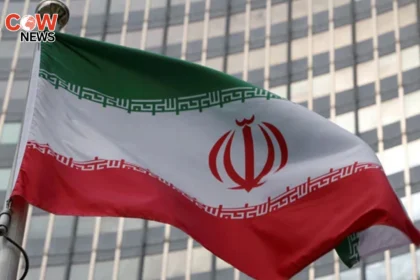Introduction
The city of Sialkot, renowned for its industrial prowess and cultural heritage, now grapples with a pressing issue that threatens its future—an alarming rise in drug abuse among the youth. Areas like Nikapura, Hajipura, and Shahabpura have become hotspots for drug dealing, leading to widespread concern among residents about the impact of addiction on the younger generation. Despite efforts by law enforcement to tackle the problem, many community members express frustration over what they perceive as ineffective responses to the drug crisis.
The Scope of the Drug Problem
The recent surge in drug sales in Sialkot has become a topic of grave concern. Reports indicate that addiction rates, particularly among young people, are rising sharply. Various substances, including hashish, heroin, and methamphetamine (commonly referred to as ice), are easily accessible, often in neighborhoods where youth congregate. This accessibility creates a perfect storm for addiction, with many young individuals succumbing to the temptations and peer pressures surrounding drug use.
Community Reactions
The community’s response has been one of outrage and urgency. Residents are vocal about their frustration, with many calling for immediate action from local authorities. “Drugs are spreading rapidly in our community, and students are the ones paying the price,” one concerned citizen stated. Such sentiments reflect a collective anxiety about the well-being of the youth and the social fabric of the community.
Shopkeepers and local business owners have also shared their concerns. They report witnessing drug deals happening in broad daylight, often within sight of schools and public places. The pervasive nature of drug dealing has fostered an atmosphere of fear and helplessness among residents. Many feel that the authorities must take more decisive action or risk further deterioration of the community.
The Role of Law Enforcement
In response to the escalating crisis, the Sialkot District Police Officer (DPO), Umar Farooq, announced that police operations targeting drug dealers have intensified. Over the past three months, law enforcement claims to have arrested 754 suspects and seized 625 different drugs, including hashish, ice, and heroin. However, despite these reported efforts, public satisfaction remains low, with many community members expressing skepticism about the police’s effectiveness.
Police Strategies and Challenges
The police have employed various strategies in an attempt to tackle the drug crisis:
- Increased Patrols: Officers are conducting more frequent patrols in known drug hotspots to deter dealing and usage.
- Community Engagement: Efforts to involve community members in reporting drug-related activities have been initiated. Building trust between the police and the community is crucial for effective law enforcement.
- Intelligence Gathering: Police are relying on tips from the community to inform their operations. However, fear of retribution often prevents residents from coming forward with information.
Despite these strategies, several challenges hinder the police’s effectiveness:
- Corruption: Allegations of corruption within the police force have undermined public trust. Some residents believe that certain officers may be complicit with drug dealers, making it difficult to combat the problem effectively.
- Resource Limitations: The police often lack adequate resources, including personnel and equipment, to conduct thorough investigations and execute large-scale operations against drug networks.
- Community Distrust: A history of ineffective policing has led to skepticism among residents about the police’s ability to protect them from drug-related issues.
Public Sentiment Towards Law Enforcement
The public’s frustration with law enforcement is palpable. Many residents feel that police efforts are inadequate and that drug dealers operate with impunity. A recurring theme in community discussions is the belief that the police are either unable or unwilling to address the issue effectively. This perception further exacerbates the problem, as it leads to a cycle of distrust and disengagement between the community and law enforcement.
The Impact of Drug Abuse on Youth
The consequences of rising drug abuse among youth in Sialkot are profound and far-reaching. Addiction not only affects the individual users but also their families and the community at large.
Health Implications
Drug addiction has severe health consequences, particularly for young individuals whose bodies and minds are still developing. Long-term drug use can lead to:
- Mental Health Issues: Increased risk of anxiety, depression, and other mental health disorders.
- Physical Health Decline: Drug abuse can result in chronic illnesses, infectious diseases (especially through needle sharing), and even death due to overdose.
- Cognitive Impairments: Regular drug use can impair cognitive functions, affecting academic performance and decision-making abilities.
Social Consequences
The social implications of drug abuse are equally concerning. Families of addicts often bear the brunt of addiction’s toll, facing emotional, financial, and social challenges. Relationships can become strained, leading to family breakdowns and increased domestic issues. Moreover, as youth turn to drugs, their engagement in constructive activities—such as education, sports, and community service—diminishes, leading to a cycle of disengagement and further vulnerability.
Economic Costs
The economic impact of rising drug addiction is significant. Communities bear the costs associated with healthcare, crime, and lost productivity. The strain on local healthcare systems increases as more individuals require treatment for addiction and related health issues. Furthermore, the presence of drugs in the community can deter businesses from operating in affected areas, stifling economic growth and opportunities.
The Importance of Community Involvement
Addressing the drug crisis in Sialkot requires a collective effort that transcends law enforcement. Community involvement is essential for creating a supportive environment that can combat addiction and promote healthy lifestyles.
Educational Initiatives
Raising awareness about the dangers of drug use is a critical component of prevention efforts. Schools and community organizations can play a significant role in educating youth about the risks associated with drugs. Workshops, seminars, and outreach programs can provide valuable information and resources to young people and their families.
Support Networks
Establishing support systems for individuals struggling with addiction is essential for rehabilitation and recovery. Community centers can offer counseling services, peer support groups, and resources for treatment options. Creating a safe and welcoming environment encourages individuals to seek help and facilitates their recovery journey.
Engaging Youth
Engaging youth in positive activities is vital for preventing drug abuse. Sports, arts, and community service initiatives can provide constructive outlets for energy and creativity, reducing the allure of drugs. By offering alternatives, communities can help steer young people away from harmful behaviors.
Government and Policy Initiatives
Local and provincial governments must prioritize the drug crisis as part of their public health and safety strategies. Effective policies are needed to address the root causes of drug abuse and create a comprehensive response to the crisis.
Allocation of Resources
Governments should allocate sufficient resources to support law enforcement, prevention programs, and treatment facilities. Investments in drug education and community outreach initiatives can have long-term positive impacts on reducing addiction rates.
Legislative Measures
Stricter laws targeting drug trafficking and increased penalties for dealers can serve as deterrents. Additionally, decriminalizing certain substances while focusing on treatment rather than punishment could help shift the narrative around addiction and reduce stigma.
Collaboration with NGOs
Partnering with non-governmental organizations (NGOs) that specialize in drug rehabilitation and prevention can enhance the effectiveness of government efforts. NGOs often have the expertise and community connections necessary to implement successful programs.
Success Stories and Hope for the Future
Despite the challenges, there are success stories that highlight the potential for change. Communities across Pakistan have begun to implement innovative programs aimed at tackling drug addiction and supporting recovery.
Rehabilitation Programs
Several rehabilitation centers in Pakistan have achieved notable success in helping individuals recover from addiction. These centers provide comprehensive treatment plans, including medical care, counseling, and life skills training. Success stories from these facilities demonstrate that recovery is possible with the right support and resources.
Community-Led Initiatives
Grassroots organizations and community leaders have initiated various programs aimed at raising awareness and providing support for those affected by addiction. By mobilizing community members and fostering a sense of collective responsibility, these initiatives have started to change the narrative around drug abuse in local areas.
Conclusion
The drug crisis in Sialkot represents a complex challenge that requires immediate and coordinated action from all sectors of society. While law enforcement plays a crucial role in combating drug trafficking, the involvement of the community, educational institutions, and government agencies is equally vital for creating a holistic response to the issue.
As residents continue to voice their concerns and demand action, it is essential for all stakeholders to work together to develop effective strategies that address the root causes of addiction and promote recovery. By fostering a collaborative environment and providing the necessary support, Sialkot can reclaim its future and protect its youth from the devastating effects of drug abuse.
The time for decisive action is now. With collective efforts, Sialkot can not only combat the current crisis but also create a healthier, safer, and more vibrant community for generations to come.
#Sialkot #DrugCrisis #YouthAddiction #CommunityAction #PoliceResponse #PublicHealth #DrugAwareness #Rehabilitation #SocialImpact #LocalGovernment







